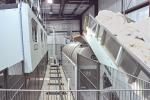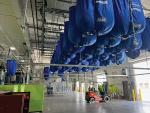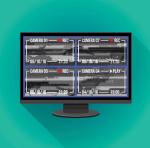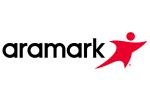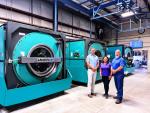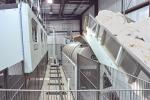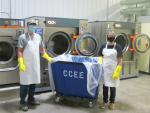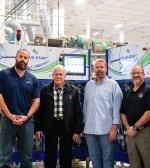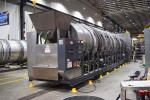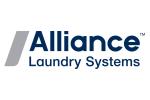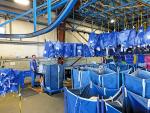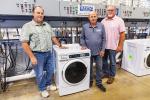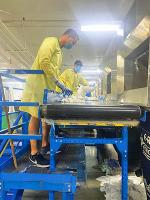CHICAGO — The laundry and linen services industry has been automating its processes for many years.
But with recent labor challenges and a renewed focus on quality and profitability, many operators are taking a closer look into automation options to decrease the cost of manpower and increase quality and earnings.
Harbor Results Inc., a manufacturing industry advisor, did research for the Association for Linen Management’s (ALM) LaundryMarks benchmarking program and found some interesting details when it comes to automation.
First, automation alone will not drive profitability. In theory, automation in the finishing area will drive profitability sooner than automation in the soiled area.
Second, automation must correlate with business size. If a $10 million business and a $50 million business have the same level of automation, the $10 million laundry will likely be more profitable.
So then, how can a laundry best evaluate its automation needs and requirements, select the right vendors and equipment, and maintain operations and quality during a build or upgrade?
American Laundry News communicated with four industry insiders (three laundry operators and a consultant) to help with the automation process.
OVERLOOKED FACTORS
Unfortunately, automating laundry operations sometimes isn’t as smooth or easy as it sounds. Sometimes unconsidered factors make processes more difficult.
“I think sometimes laundries assume automating a process will make things easier, but that’s not always the case,” points out Curtis Nichols, general manager of HandCraft Linen Services in Richmond, Virginia. “There are some processes that are better, and more cost-effective, done by hand.
“Additionally, I think it’s important not to overcomplicate it. Apply the appropriate amount of automation. Too much automation can work against you.
“We’ve made that mistake before and have been careful since then to not overthink it.”
Gerard O’Neill, president/CEO/owner of American Laundry Systems, a laundry consulting business in Derry, New Hampshire, uses the analogy of buying a brand-new Formula 1 race car for a laundry when management and staff have been used to driving, operating and maintaining a pickup truck.
“Do you know how to drive this new racecar to the best of its capabilities, and can you maintain it enough so that it is on the racetrack and not in the shop waiting to be fixed?” he asks.
“In other words, learn how to use this machine and maintain it or don’t bother buying it. What’s the point of owning an F1 racecar if you only drive it at 60 mph like your pickup truck?”
Patrick Garcia, president of Division Laundry & Cleaners in San Antonio says it’s crucial to have a qualified maintenance staff to sustain the maximum efficiencies of the new automation in the new equipment. Sometimes operations don’t ensure that staff is in place.
Also, some laundries haven’t ensured ample space to avoid overcrowding everything into a confined space, jeopardizing access to maintain each piece of equipment.
“I talked to a laundry owner up in Rhode Island, and when he moved his plant, he said, ‘Hey, I went and I tried to automate as much as I can and I didn’t see as much of a return as I thought,’” shares Mario Stagliano, managing partner of Arway Linen & Uniform Rental Service in Philadelphia.
“I said, ‘Did you come from tunnel washers? Did you come from a rail system? Did you already have these things in place that I don’t?’ He said they had all that. Maybe the ROI on that additional automation that you invested in was not going to give you what you need because you were already kind of halfway there with what’s available in the industry for us.”
In his plant, Stagliano says they didn’t realize how big soil sort automation would be.
“Right now, I have 19 people sorting, and we figured we’re going to have additional space and we’ll have a little more updated of a soil sort system,” he shares. “But the way it’s been designed with what they knew they had available, I can sort the same volume with eight people as I can now with 19.
“Food and beverage specific, I think we initially overlooked the power of a solid sorting system to really reduce full-time employees (FTE). That saves you money.”
Stagliano also says it’s important to not overlook the flow of the operation when planning.
“You can’t overlook the flow of the product because that can set you back,” he says. “I wouldn’t maybe put that in the automation category, but flow is really big.”
MAINTAINING QUALITY, SERVICE
Once the evaluations and selections are complete, it’s time for a laundry to upgrade equipment on site or create a new operation at a different location.
Still, during the upgrade and changeover, goods must be processed and current customers satisfied.
“Pretty much all of the automation we’ve implemented has been a new build-out,” shares Nichols. “I would say careful planning and leadership would be the keys to adding automation to a plant while it is operational.”
Options O’Neill suggests include buying new inventory of stock so that customers can be served while the equipment is not available or not working yet, extending working hours, or outsourcing temporarily.
“Find a hole—really—find a place or make space or build an extension to house the equipment that is being installed so that there’s as little impact on production as possible,” he says.
Garcia recommends getting a memo of understanding from all vendors that they will have to work after the plant has completed production.
“That means after hours,” he says. “You can’t compromise your employees’ safety at any time. You need all oars in the water during your normal operations so you’re not sacrificing quality and service.”
Stagliano says his company will be operating at its current plant until the new operation is set.
“Until we transition in, one of the things during our syncing process, when all this new equipment is up and running, it’s trial and error,” he says.
“Just because we have a plan for when all this equipment arrives and we plug it in and say we designed this with the intention of it going this way, maybe it’s not going that way and we have to figure something out on the fly. I think all those things will affect quality.
“It takes an army. We have consultants. We have manufacturers. We have chemical companies. We have our entire team. Everybody’s going to have to lend a hand to make sure this thing goes as smooth as possible.
“When I say smooth, I don’t just mean the equipment brought in reducing FTEs, we want to have a better-quality product than we do now.
“I think it’s just going to take that army of people to work together, to get our heads together and make sure that we are where we need to be.”
Miss Part 1 on important factors to consider for new or updated equipment? Click HERE to read it. To read Part 2 on determining areas of a laundry to automate and selecting vendor partners, click HERE.
Have a question or comment? E-mail our editor Matt Poe at [email protected].





















































